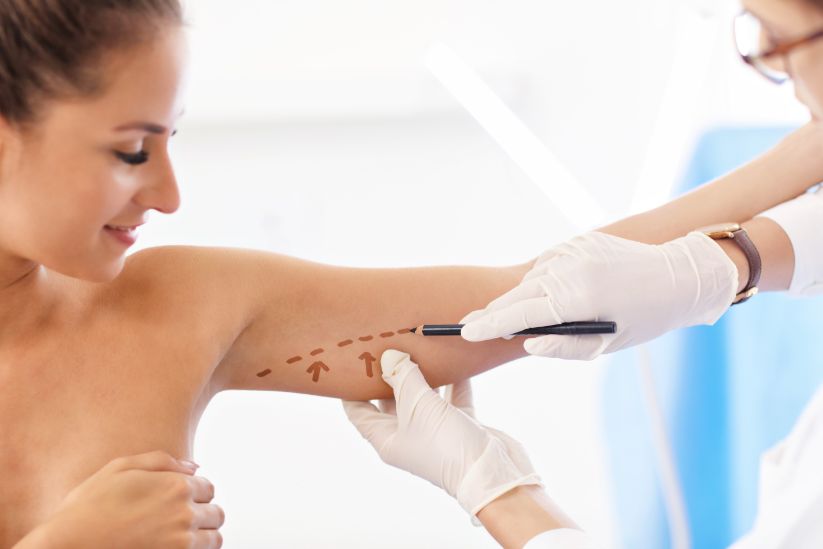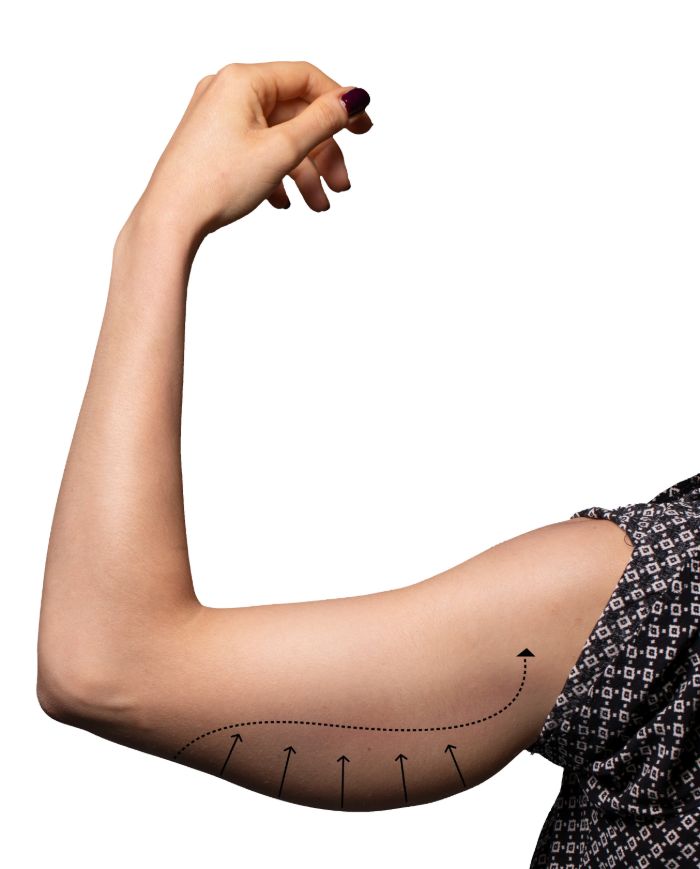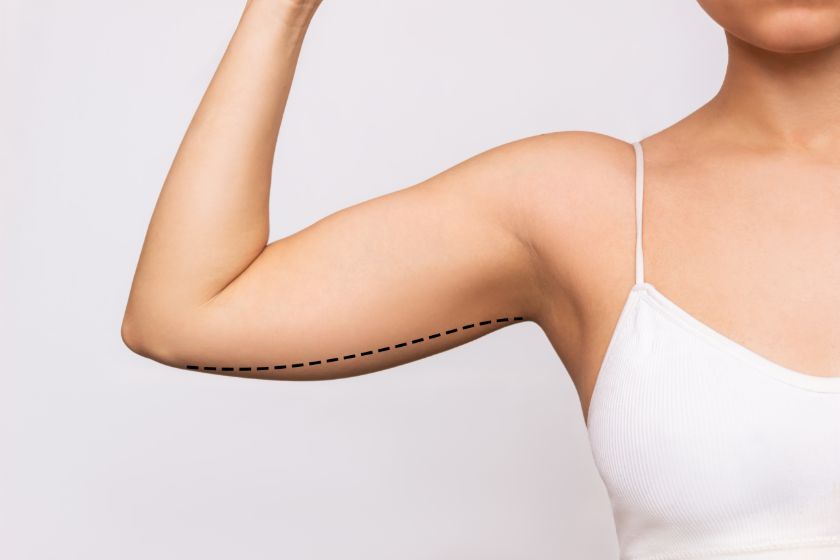About Thigh and Arm lift
When a relaxation of the skin of the inner face of the thighs or arms is visible, then a liposuction with an excision of the excess of skin can be the solution. This procedure is also known as “cruroplasty” for the thighs and “brachioplasty” for the arms.
he surgery’s objective is to reduce the subcutaneous fat tissue and the excess skin to obtain a firm and round limb. The surgery is normally perform under general anesthesia. A liposuction can often be assotiated.

Type of Thigh and Arm lift & Methods of Treatment.

Aesthetics surgery
A full evaluation and careful examination will be performed. The motivations and the requests of the patient will be analysed and an attentive study of the inner face of the thighs and arms and its relationship with the rest of the body will be done.
The fees of this first consultation will be completely refunded by deducting them from the surgical fees. Liposuction can be insufficient, and light residual asymmetries or small irregularities of surface can be seen. These imperfections are in general accessible to a complementary treatment that can be done under local anaesthesia after a sixth month period. Possible complications A lift of the inner face of the thighs and arms, although carried out for aesthetic motivations, is an important surgical procedure, which carries the risks related to any surgery. It is necessary to distinguish the complications related to the anaesthesia from those related to the surgical procedure. With regard to the anaesthesia, the anaesthesiologist will inform you about the anaesthetic risks. It should be known, indeed, that the techniques, the anaesthetic products and the methods of monitoring have made immense progress these twenty last years, offering optimal safety. Concerning the surgical procedure, by choosing a qualified surgeon one limits these risks.
The complications that can appear during this procedure include: Thrombo-emboli formation (phlebitis, pulmonary embolism) although overall rather rare, is among the most frightening complication. Rigorous precautionary measures are used to minimise these incidences. These include, the use of anti-thrombosis agents, early mobilisation and if needed anticoagulant treatment. Haematoma formation, in fact rare, can justify a drainage in order to avoid a secondary deterioration of the aesthetic result. Infection, which is very rare, will require a surgical drainage and an antibiotic treatment. Seroma formation, the most common complication, can be observed from the 8th day and results from the collection of lymphatic liquid.
It can be simply aspirated generally without any particular after effect. Localized cutaneous necrosis is very rare and results from excessive tension in certain areas. Finally, a delay on the wound healing process can be observed in diabetic and smokers.
The treatment of the inner face of the extremities can be performed by one or a combination of several techniques including liposuction and excision of fat and skin. The best technique is chosen by the surgeon and the patient, who should have a full understanding of the procedure and its potential complications. Once the surgeon’s skills are put to work, in the vast majority of cases, this leads to a very satisfying result for many healthy years to come.
Aesthetics
Dressing
At the end of the surgery, a dressing with elastic bands and a panty are used.
Time of work
The duration of the surgery is in average two hours, but it is variable according to the extent of the restoring project.
The results
It is appreciated within 6 to 12 months after the intervention. A firm and pleasant aspect of the thighs and arms is achieved, and the tissues will adapt to the new shape. The scars are usually discrete, they are hidden in a natural folds and in the inner face of the extremities.
Type of Anaesthesia and Hospitalisation
Anaesthesia: A cruroplasty and brachioplasty can be carried out under general anaesthesia or local anaesthesia deepened by sedatives. The choice between these different techniques will result from a discussion between you, the surgeon and the anaesthetist. An appointment with the anaesthetist will be scheduled at the least 48 hours before the surgery.
Hospitalisation: The hospitalisation will last in average from 1 to 3 days according to the cases. However, the treatment of the inner face of the arms (brachioplasty) can be managed in a “day surgery” basis. In this case, the patient can be discharged the same day after proper evaluation. Generally, a lift of the inner face of the thighs or arms, correctly indicated and realised renders a real service to the patient. However, it is not rare that localised imperfections can be observed without they constituting real complications: these imperfections are related in particular to the scar which can be a little too visible, slack, even adherent. In the event of excessive tension applied on the groin, a lowering and even a migration of the scar can be observed.

Contact our beauty experts
for more advice



